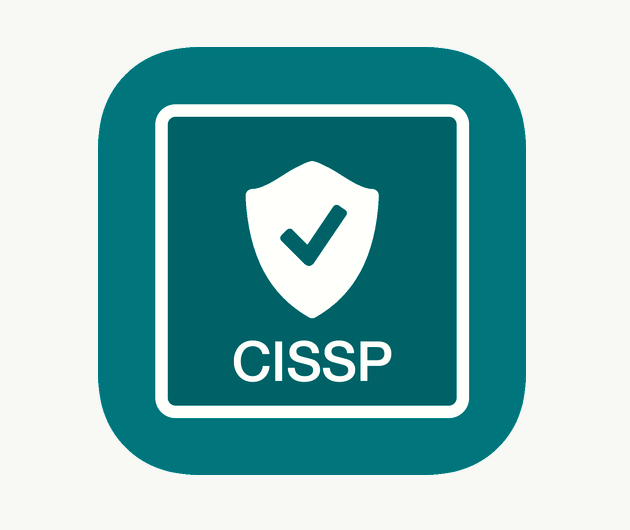CISSP - Question Bank 05
Test your knowledge of CISSP with these multiple choice questions. Each Question Bank includes 20 practice questions that have been designed to measure your knowledge of key ideas.
A key factor to keep in mind is that guessing is better than not answering a question.
Every single question on the CISSP exam is a four-option multiple choice question with a single correct answer. Some are straightforward, such as asking you to select a definition. Some are a bit more involved, such as asking you to select the appropriate concept or best practice. And some questions present you with a scenario or situation and ask you to select the best response.
StartQ1. Which of the following contains the primary goals and objectives of security?
A. A network's border perimeter
B. The CIA Triad
C. A stand-alone system
D. The Internet
Q2. Vulnerabilities and risks are evaluated based on their threats against which of the following?
A. One or more of the CIA Triad principles
B. Data usefulness
C. Due care
D. Extent of liability
Q3. Which of the following is a principle of the CIA Triad that means authorized subjects are granted timely and uninterrupted access to objects?
A. Identification
B. Availability
C. Encryption
D. Layering
Q4. Which of the following is not considered a violation of confidentiality?
A. Stealing passwords
B. Eavesdropping
C. Hardware destruction
D. Social engineering
Q5. Which of the following is not true?
A. Violations of confidentiality include human error.
B. Violations of confidentiality include management oversight.
C. Violations of confidentiality are limited to direct intentional attacks.
D. Violations of confidentiality can occur when a transmission is not properly encrypted.
Q6. Confidentiality is dependent upon which of the following?
A. Accountability
B. Availability
C. Nonrepudiation
D. Integrity
Q7. If a security mechanism offers availability, then it offers a high level of assurance that the data, objects, and resources are _______________ by authorized subjects.
A. Controlled
B. Audited
C. Accessible
D. Repudiated
Q8. Which of the following describes the freedom from being observed, monitored, or examined without consent or knowledge?
A. Integrity
B. Privacy
C. Authentication
D. Accountability
Q9. All but which of the following items require awareness for all individuals affected?
A. The restriction of personal e-mail
B. Recording phone conversations
C. Gathering information about surfing habits
D. The backup mechanism used to retain e-mail messages
Q10. Which of the following is typically not used as an identification factor?
A. Username
B. Smart card swipe
C. Fingerprint scan
D. A challenge/response token device
Q11. What ensures that the subject of an activity or event cannot deny that the event occurred?
A. CIA Triad
B. Abstraction
C. Nonrepudiation
D. Hash totals
Q12. Which of the following is the most important and distinctive concept in relation to layered security?
A. Multiple
B. Series
C. Parallel
D. Filter
Q13. Which of the following is not considered an example of data hiding?
A. Preventing an authorized reader of an object from deleting that object
B. Keeping a database from being accessed by unauthorized visitors
C. Restricting a subject at a lower classification level from accessing data at a higher classification level
D. Preventing an application from accessing hardware directly
Q14. What is the primary goal of change management?
A. Maintaining documentation
B. Keeping users informed of changes
C. Allowing rollback of failed changes
D. Preventing security compromises
Q15. What is the primary objective of data classification schemes?
A. To control access to objects for authorized subjects
B. To formalize and stratify the process of securing data based on assigned labels of importance and sensitivity
C. To establish a transaction trail for auditing accountability
D. To manipulate access controls to provide for the most efficient means to grant or restrict functionality
Q16. Which of the following is typically not a characteristic considered when classifying data?
A. Value
B. Size of object
C. Useful lifetime
D. National security implications
Q17. What are the two common data classification schemes?
A. Military and private sector
B. Personal and government
C. Private sector and unrestricted sector
D. Classified and unclassified
Q18. Which of the following is the lowest military data classification for classified data?
A. Sensitive
B. Secret
C. Sensitive but unclassified
D. Private
Q19. Which commercial business/private sector data classification is used to control information about individuals within an organization?
A. Confidential
B. Private
C. Sensitive
D. Proprietary
Q20. Data classifications are used to focus security controls over all but which of the following?
A. Storage
B. Processing
C. Layering
D. Transfer
- Question Bank 00
- Question Bank 01
- Question Bank 02
- Question Bank 03
- Question Bank 04
- Question Bank 05
- Question Bank 06
- Question Bank 07
- Question Bank 08
- Question Bank 09
- Question Bank 10
- Question Bank 11
- Question Bank 12
- Question Bank 13
- Question Bank 14
- Question Bank 15
- Question Bank 16
- Question Bank 17
- Question Bank 18
- Question Bank 19


